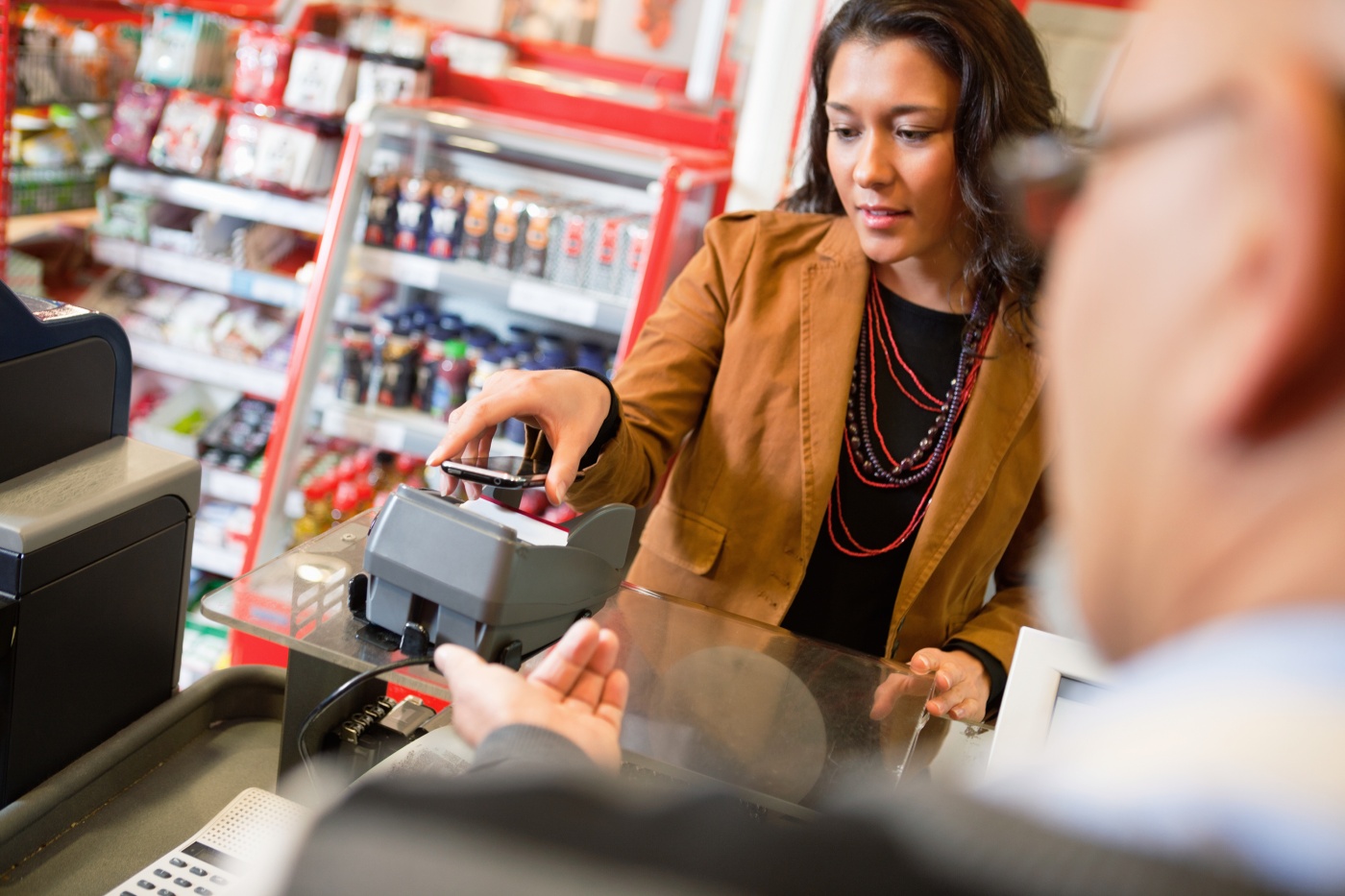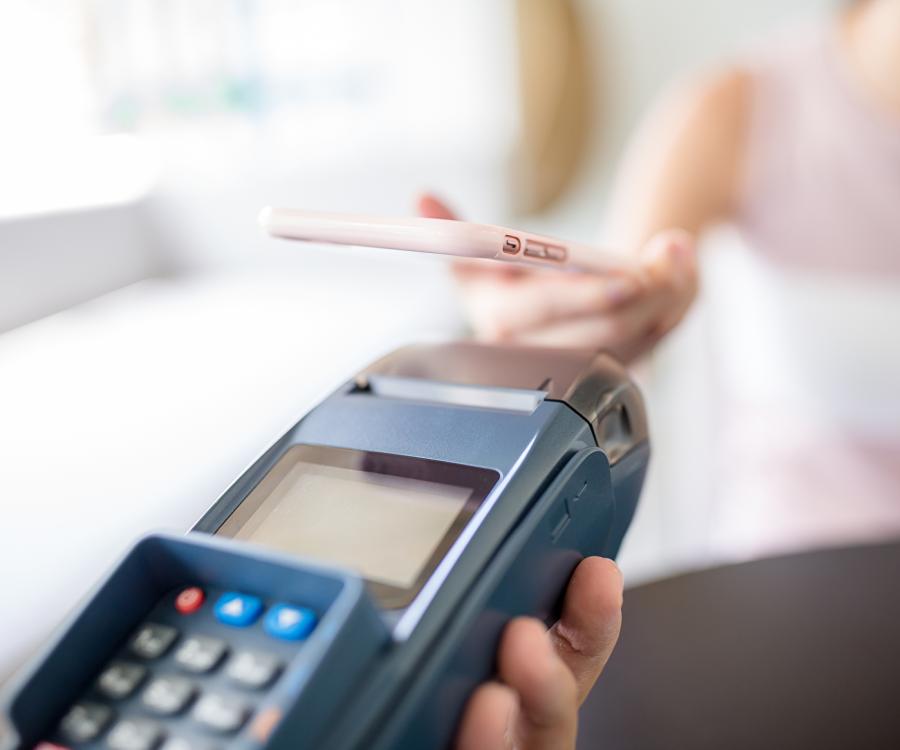"I assume that in the long run customers don’t want to carry a wallet that’s bursting with coins, credit and debit cards." (Prof. Ludwig Hierl)
Out in the field, new technologies hinge on whether the people who use them also accept and adopt them. In this conversation with iXtenso, Professor Ludwig Hierl points out that things are still amiss when it comes to mobile and contactless payment in the retail sector. But he also provides solutions that might make this payment method more attractive for both staff members and customers.
Professor Hierl, based on first-hand experiences in various supermarkets, the staff at the checkout are unfamiliar with how contactless payment works. What’s your take on that?
Research shows that contactless payment solutions with debit and credit cards already work quite well after an initial adjustment period, provided that point of sale terminals have been modified accordingly and checkout personnel has been instructed. This is not the case when it comes to payments made with mobile phones. Product testing under real-life purchase conditions at 261 POS terminals across Germany by 119 groups of companies revealed that mobile payment can also fail due to lack of knowledge or enthusiasm of checkout personnel.

How could retailers make smartphone payments more accessible to customers and employees?
For the record, neither retailers nor customers are subjected to any demand-driven pressure to introduce new payment instruments at German POS terminals, especially since there are already many reliable cashless payment options available. This is why this newly added mobile payment option necessitates incentive programs for all parties involved. The deliberate embedding of consumer mobile devices provides opportunities for survival against current cutthroat competition especially for smaller retailers, with cost advantages over increasingly expensive cash handling. It should be pointed out to employees that this also helps to maintain jobs. The abundant range of available rebates, coupons, bonus points, special (local) sales offers and additional product information plus automatically generated household budget worksheets is suitable to persuade customers to use mobile payment solutions. By charging a symbolic price of 1 cent, valuable giveaways can be sold to customers who want to try out mobile payments during a virtual test campaign for example.
You found out that many retailers who offer mobile payment options don’t really implement them properly. What needs to happen in this case?
Within the context of discontinuity which appears to be especially distinct in the retail industry, it’s crucial to not just simply adopt the latest approaches and developments (“me-too“). One can expect failure given a frequently seen half-hearted adoption in practical application. If your objective is to gain a competitive advantage, you have to do some out-of-the (standard) box thinking and ideally create a unique selling proposition (USP). The increasing digitization provides many opportunities whose integration should be coordinated. Mobile payment is simply one element.

Briefly, what are your tips for retailers who want to offer NFC or QR-based payment options?
It is imperative to first get informed and make the required investments in software and hardware based on the new cash handling accounting guidelines. In this context, mobile payment would ideally not just be reduced to its mere payment function but seen as part of a comprehensive mobility and digitization strategy. Nowadays, it would already be relatively easy to create added benefits for customers. Examples of this are the transmission of digital sales receipts, digital record keeping, individualized marketing based on user information, the collection of digital bonus points and their electronic redemption, the creation, and processing of digital shopping lists and indoor navigation. This would become a USP since no other retailer offers these comprehensive options at this point. Needless to say, respective retailers have to weigh the resulting additional investments against the particular situation.
Why did previous options fail that have since disappeared from the market?
For more than a decade, mobile payment apps have been expected to one day be an integral part of how we pay for our products. One aspect that the scores of options that failed in Germany such as mPass, myWallet, SmartPass, and Yapital have in common is that their objectives might have perhaps been too ambitious, while they did not sufficiently take the multi-attribute mobile payment success factors model into account. Studies reveal that customers mostly indicate security as a key criterion. Since solutions that try to include this aspect to the full extent are too complex and too expensive, their failure is all but inherent. Even automated teller machines are not absolutely safe for example. Yet customers are willing to accept this because they can lodge a claim for compensation in case of manipulation.
Where are mobile payment solutions already successful in practical application?
In our product testing, mobile payments was an option at twelve groups of companies or via four applications, respectively. It should be noted that this product testing was a snapshot. Similar to issues arising from cut-off dates for financial statement analysis, it is possible that there could have been a different result immediately before or after the respective check, for example, if an unexperienced checkout assistant was replaced by a staff member who is specifically trained in this area. Unfortunately, there were also several instances of “misleading of customers“ by referring to wallet payment apps that at that point had no longer been an option for quite some time.
Where do you see more future prospects: in contactless payment with smartphones or credit cards?
I assume that in the long run customers don’t want to carry a wallet that’s bursting with coins, credit and debit cards. The payment industry seems to be one of the last areas of life that is not yet dominated and shaped by mobile devices. I believe this is going to change. The only question is when.













